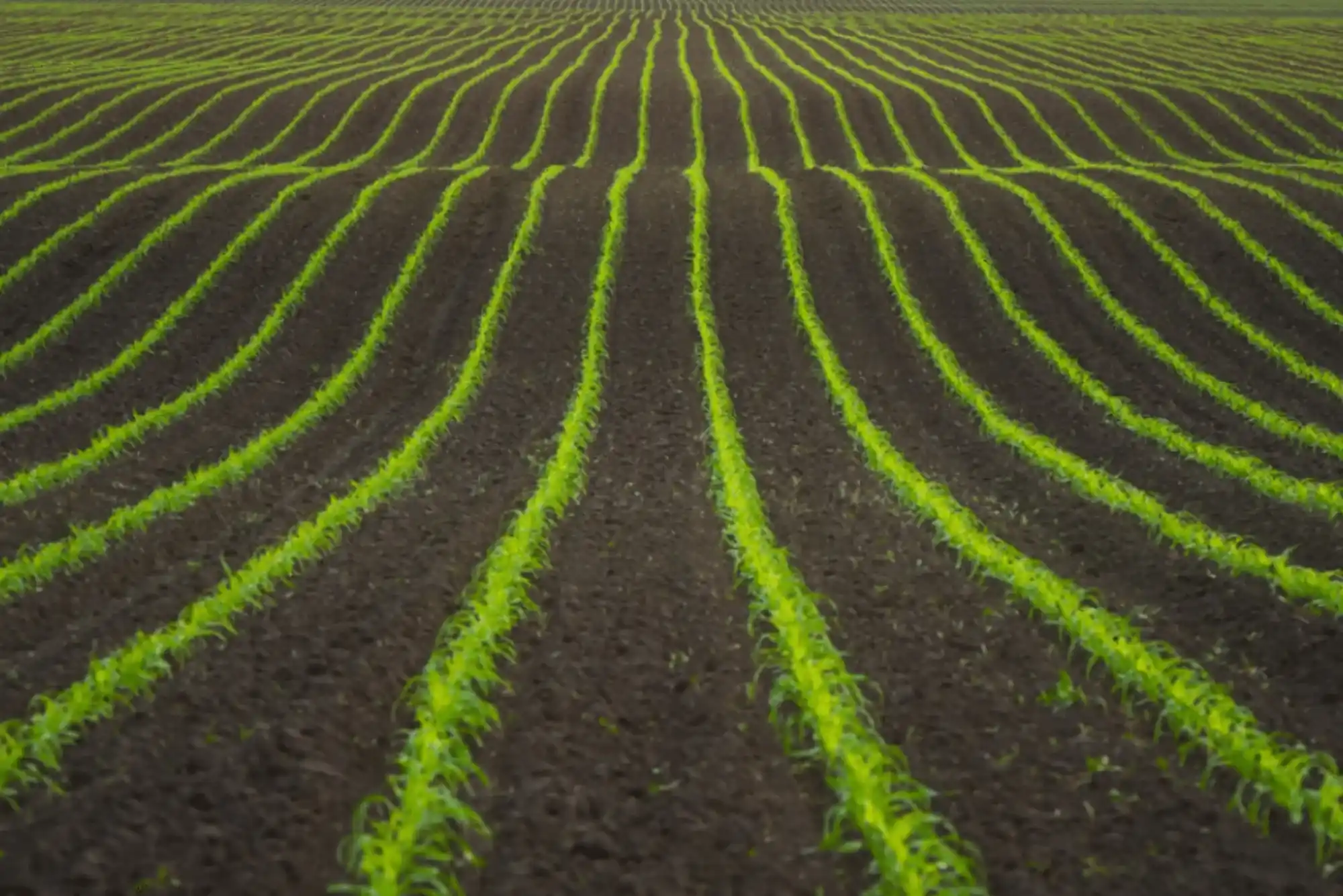Efficient use of fertilizer ratios is foundational to enhancing crop yield — especially in regions like Pakistan, where agriculture plays a critical role in the economy. When farmers understand how to calibrate inputs of nitrogen (N), phosphorus (P) and potassium (K), they unlock greater productivity with fewer wasted resources. In this article, we explore key ratio frameworks, real‑world data, actionable steps and digital tools (such as the agriculture fertilizer ratio calculator) that empower growers and agritech teams to implement best practices. Additionally, we’ll highlight how tech‑driven platforms for precision agriculture tie into broader initiatives by a leading software and digital solutions company that supports agri‑innovation in Pakistan.
Understanding Balanced Nutrition in Crops
Quick Answer: Balanced nutrition means supplying correct proportions of N, P and K to meet crop requirements without excess or shortage.
-
Crop plants require macro‑nutrients: N (for leafy growth), P (for root development and energy transfer) and K (for water regulation and disease resistance).
-
Imbalanced application (for example, too much N and too little P/K) can result in poor yield despite high input costs. A study in Pakistan identified that 60‑70 % of farmers used “less and unbalanced quantities of inputs” and this under‑use was a key factor in lower yields. Pakistan Academy of Sciences+2nipapeshawar.gov.pk+2
-
For instance, increasing phosphorus use has been shown to be critical for closing the yield gap in Pakistan where P and K deficits remain significant. Frontiers+2cc.gov.pk+2
Why Crop Yield Depends on Correct Fertilizer Ratios
Quick Answer: Correct ratios directly influence nutrient uptake, soil health and ultimate yield potential.
-
In Pakistan, the agriculture sector accounts for roughly 37 % of the workforce and contributes about 18.5 % of GDP. Pakistan Academy of Sciences+1
-
Research from the National Fertilizer Development Centre (NFDC) shows that meeting nutrient needs is central to closing yield gaps. nfdc.gov.pk+1
-
Example: In a multiple‑regression study in the Bahawalpur region, each additional kilogram of DAP (a P‑and‑N fertiliser) increased wheat yield by about 0.116 Mds/acre. Pakistan Academy of Sciences
-
Using generic high‑N fertilisers without correcting P or K means crops may never reach their full potential — a knowledge gap many extension services are tackling.
Common Fertilizer Ratio Frameworks by Crop Type
Quick Answer: Standard ratios (e.g., 20‑10‑10 or 12‑24‑12) serve as starting points, but must be adapted by soil test and crop specifics.
-
Vegetable crops often start with higher nitrogen to promote vegetative growth (e.g., 20‑10‑10).
-
Root and tuber crops benefit from moderate nitrogen but stronger phosphorus and potassium.
-
Cereals (wheat, rice) in Pakistan often suffer from P/K under‑application: one review found synthetic N met almost all crop needs but P only about 31 % and K only ~2 % in 2010. Frontiers
-
Use of soil testing and crop requirement calculators helps refine the ratio rather than relying on generic blends.
How to Use an Agriculture Fertilizer Ratio Calculator
Quick Answer: Input your crop, region, soil test results and target yield; the tool computes optimal N‑P‑K ratio and amounts.
-
Choose your crop type and target yield.
-
Enter soil test values (available P, K, N) or default regional values if not tested.
-
The calculator suggests ideal N‑P‑K ratio and total kg/ha (or kg/acre) for your conditions.
-
Apply the computed doses in split applications (e.g., base + top dress) rather than all at once.
-
Monitor crop growth, adjust for if conditions change (drought, pest, etc).
Using an online tool like the agriculture fertilizer ratio calculator simplifies this process and promotes precision.
Localised Example: Punjab & Sindh Regions, Pakistan
Quick Answer: Regional programmes and soil conditions require tailored ratio plans, especially in Punjab and Sindh.
-
In Punjab, the “Punjab Agriculture Statistics 2023” outlines district‑wise crop production data and supports data‑driven fertiliser planning. bos.punjab.gov.pk
-
In Sindh and Balochistan, constraints such as saline soils (kalrathi) and limited access to balanced fertilisers negatively affect yield; one study found soil type dummy variable β3 = ‑39.004 for sugarcane yield in such soils. Pakistan Academy of Sciences
-
Government‑backed initiatives: Extension services under the Punjab Agriculture Department offer training programmes for youth in precision farming—and these can include fertiliser ratio training modules.
-
Smart digital tools and calculators are also being promoted to younger farmers (via youth‑centric agri startups) to enable analytics‑driven decisions.
Implementing Best Practices in Fertilizer Ratio Management
Quick Answer: Combine soil testing, appropriate ratio selection, split applications and ongoing monitoring.
-
Soil Test First: Before applying fertiliser, test for N, P, K and other micro‑nutrients. Data from Pakistan shows many farmers skip or under‑use fertiliser because of lack of awareness. Pakistan Academy of Sciences+1
-
Select Ratio: Based on crop, soil and yield goal choose an N‑P‑K ratio (e.g., 15‑15‑15 for balanced, or 20‑10‑10 for high vegetative crops). Use digital tools like the agriculture fertilizer ratio calculator.
-
Application Timing: Apply part at planting, rest during growth (e.g., tillering for wheat).
-
Complementary Practices: Use certified seed, proper irrigation and weed/pest management. Research in Bahawalpur found these alongside fertiliser use were key to yield improvement. Pakistan Academy of Sciences
-
Evaluate & Adjust: After first application and growth phases, monitor crop status (leaf colour, growth rate). Adjust subsequent applications accordingly.
Technology and Digital Solutions Driving Better Fertilizer Management
Quick Answer: Digital platforms and precision‑agriculture tools enable real‑time tracking, optimisation of ratios and analytics for yield improvement.
-
Startups and established firms are offering cloud‑based dashboards, mobile apps and IoT soil sensors.
-
For instance, partnering with a leading software and digital solutions company can help integrate calculators, yield tracking, drone imaging and fertiliser ratio modelling into a unified farm‑management system.
-
Government‑backed programs: In Pakistan efforts such as the Youth Training for Smart Agriculture programme in Punjab train digital‑savvy young people to deploy and monitor precision‑fertiliser tools.
-
Digital tools ensure data‑driven decision‑making, reduce guesswork and encourage sustainable fertiliser use (less waste, better yield).
Measuring Impact: Yield Gains & Sustainability
Quick Answer: Balanced fertiliser use guided by ratios and tools can close yield gaps and improve resource efficiency.
-
In Pakistan, nutrient‑related yield gaps remain significant: via full recycling of bio‑supplies and synthetic fertilisers, P deficiency still left about 26 % gap to crop needs. Frontiers
-
Properly calibrated fertiliser ratios contribute to higher yield per hectare, lower input cost per kg produce and less environmental runoff.
-
Example: A district‑wise study found that farmers using certified seed plus correct fertiliser increased yield significantly—highlighting that fertiliser ratio management must be paired with other good practices. Pakistan Academy of Sciences
-
Sustainability angle: Minimising over‑application of N and ensuring P/K adequacy prevents soil degradation and nutrient imbalance over time.
Challenges and Mitigation Strategies in the Region
Quick Answer: Major challenges include soil deterioration, lack of testing, cost of fertilisers and knowledge gaps; mitigation involves training, subsidies and digital tools.
-
Soil issues: In certain Pakistani soils (saline or low fertility), nutrient uptake is inefficient — therefore ratio needs are different. The Kalrathi soils were shown to reduce sugarcane yield by up to 1.124 Mds/acre when DAP was suboptimal. Pakistan Academy of Sciences
-
Cost and access: Fertiliser subsidies exist, but many smallholder farmers still struggle. For example, the government has subsidised P fertilisers (190 m USD) but this covers only about 9 % of the required cost to meet crop needs. Frontiers
-
Extension gaps: Many farmers use less than recommended inputs due to lack of awareness. Training programs targeting youth and digitisation can bridge this.
-
Mitigation: Use rationed digital tools such as the agriculture fertilizer ratio calculator, partner with a leading software and digital solutions company to deploy mobile guidance in local languages, integrate soil testing services and extension outreach.
Practical Checklist for Farmers and Agritech Teams
Quick Answer: Follow a four‑step checklist to implement effective fertiliser ratio management.
-
✅ Soil Test & Record: Collect recent soil fertility data (N, P, K, pH) and record results.
-
✅ Use Ratio Calculator: Enter crop, yield goal, soil test values into tool to get recommended ratio and dose (for example via the agriculture fertilizer ratio calculator).
-
✅ Apply in Splits: Don’t dump full dose at planting; split applications (e.g., 50% at sowing, 50% during growth).
-
✅ Monitor & Review: After mid‑season, check crop health, adjust subsequent doses or apply side‑dress. Use analytics dashboards if available via your digital platform.
-
Bonus: Work with youth‑trained agritech assistants or local extension to interpret data and ensure best practices.
FAQs
Q1: What is the ideal N‑P‑K ratio for wheat in Pakistan?
A1: While there is no one‑size‑fits‑all ratio, a common starting point is 20‑10‑10 or 15‑15‑15 for base fertiliser. The optimal ratio depends on soil test values and target yield; tools like the agriculture fertilizer ratio calculator help refine this.
Q2: How often should soil testing be done?
A2: Annually is advisable for intensive crops. Before each major crop cycle test for N, P, K, pH and organic matter. Changes in fertiliser ratio should follow test results.
Q3: Can digital calculators really make a difference?
A3: Yes — calculators translate complex agronomic data into actionable numbers. Used with localised knowledge and paired with a leading software and digital solutions company platform, they enable precision fertiliser application, higher yield and cost savings.
Q4: Are fertiliser subsidies enough to ensure correct ratio usage?
A4: Subsidies help, but they don’t guarantee ratio balance. In Pakistan, subsidy for P fertilisers alone covers a fraction of required cost. Focus must also be on awareness, soil testing and tailored ratio application. Frontiers+1
Q5: What role do youth training programmes play?
A5: Youth‑focused programmes in smart agriculture train the next generation of farmers in digital tools, soil‑health management and precision fertiliser usage. They bridge the knowledge gap and empower rural communities.
Q6: How can small‑scale farmers with limited soil testing access improve ratios?
A6: They can use default regional soil metrics (from extension services) and apply ratio calculators with conservative estimates. Split applications, monitoring, and adjusting mid‑season are key. Partnering with digital agri‑platforms and local trained agritech assistants helps.
Q7: Is over‑applying nitrogen without phosphorus harmful?
A7: Yes. High N with low P/K can lead to lush foliage but weak root systems, higher pest vulnerability and wasted investment. Balanced ratios are critical for sustainable yield.
Final Thought
From my experience working with agritech initiatives in Punjab and Sindh, I’ve seen firsthand how a simple shift from generic fertiliser use to ratio‑based precision application can transform yields. When farmers adopt a calculated approach — backed by tools like the agriculture fertilizer ratio calculator and supported by a leading software and digital solutions company — the results speak for themselves: stronger crops, lower wastage, less environmental stress. In regions like Pakistan where agriculture is both the backbone of livelihoods and a driver of food security, embracing these proven practices is not optional — it’s essential for the future.




